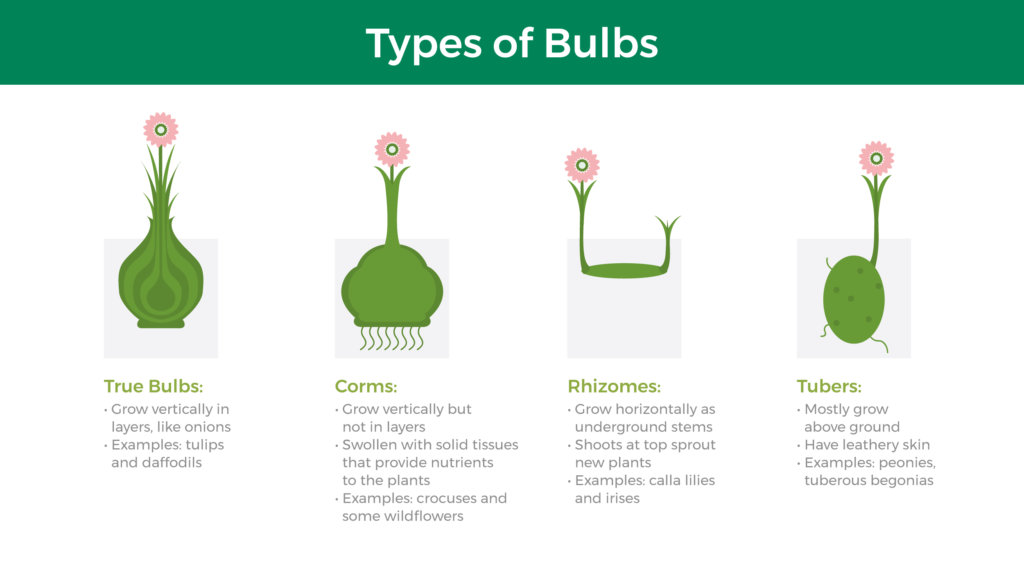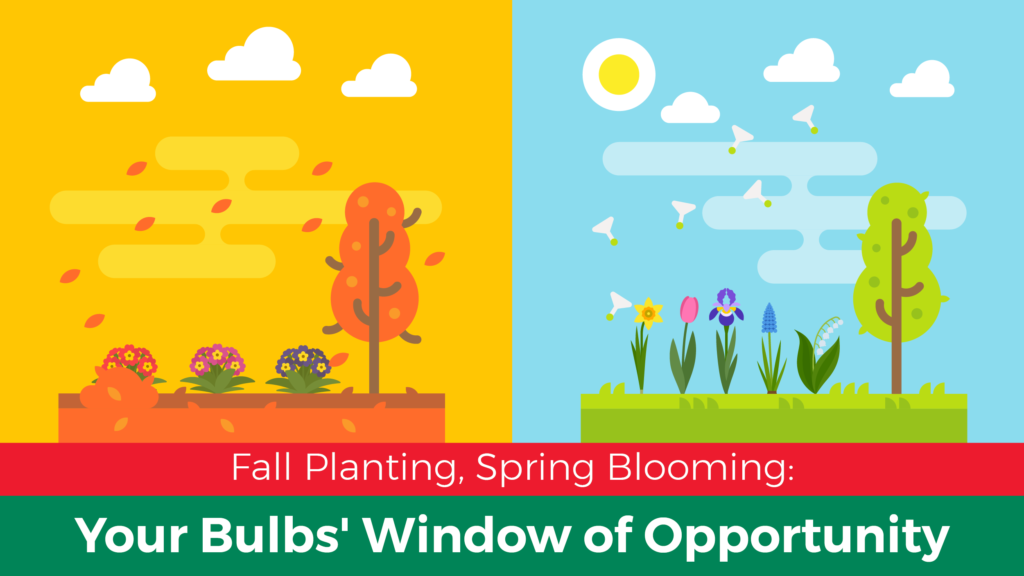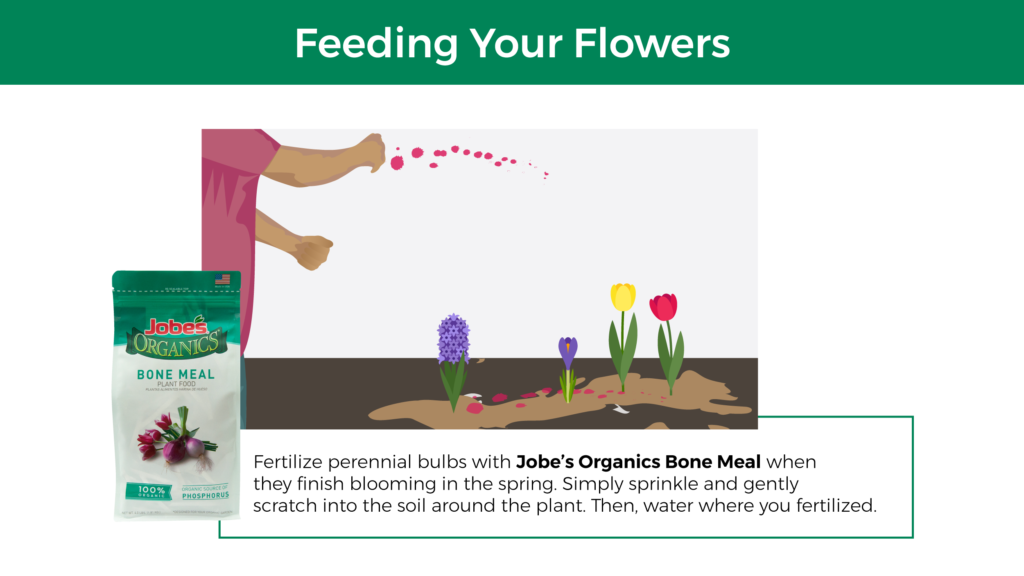The weather may have turned cool, but you can still take advantage of autumn in the garden. When springtime comes around, you’ll expect your garden to snap out of its winter hibernation with blooms and bright colors. Whether you’re growing colorful tulips or lofty alliums, planting in the fall – and keeping up with proper maintenance – yields a better landscape in the spring. Jobe’s wants to help your spring bulbs thrive with these fall gardening best practices.
What Type of Bulb to Plant?
Ornamental bulbous plants are perennials grown for decorative reasons that have underground or near-ground storage organs. The organs, containing moisture and nutrients, are what keep them alive during summer droughts and the winter cold – the plants remain in a dormant state as they lose their above-ground features during these unfavorable conditions. But, underground, they continue to survive on stored nutrients, ready to sprout again once external conditions allow.
The word “bulb” fittingly refers their bulbous shape, although this is somewhat of a blanket term for true bulbs, which are underground vertical shoots used as food storage organs, as well as other types with above-ground growing points.

Why Plant in the Fall?
It might seem like the obvious choice to get your flowers into the soil when it becomes warm again, but in fact, planting bulbs before the ground freezes over has its benefits. For one, planting early (in autumn) helps perennials flourish more quickly in spring and summer – and once they do, you’ll be able to see any bare spots that can be filled with other spring blooms. Plus, it saves you time that you can dedicate to other gardening goals come springtime. What else makes fall your window of opportunity?
You’ve Weeded Out Competition
If you spent some of your summer on your hands and knees pulling weeds, it paid off: Fall-planted perennials won’t have new overgrowth to compete with. This will help ensure your flowers a fresh start. Our WeedBlock Original fabric is also a chemical-free way to allow air and water flow to your soil while preventing weeds from pestering your garden.
Fall Means Fewer Temperature Tantrums
In some regions, spring weather can be unpredictable, bringing not only April showers but also snowstorms or soaring temperatures. On the other hand, autumn is less moody, with more consistent air temperatures and less intense sun to foster stronger growth beneath the ground. Spring soil is also often still cold from the winter, whereas in fall – even when the air is chilly – soil temperatures are better at holding onto heat and thus more welcoming to plants.
Less Stress, More Yield
You don’t want your backyard hobby to become an annual, springtime scramble to plant your perennials. Allow peak gardening season to be less time-stressed while enjoying flowering bulbs in the fall, too. Fall-season bulbs will be building their root system throughout winter, so they can flourish faster once spring comes, with a more robust and colorful yield – plus, there’s less watering for you after planting.
How to Plant Bulbs in the Fall
Planning the Planting
In general, fall-planted bulbs should be planted before the first freeze and when nighttime temperatures average from 40 to 50 degrees. Warmer climate zones might require bulbs to be pre-chilled in order to bloom – simply leave them in their bags and refrigerate for six to 10 weeks, keeping away from any produce. Spring bloomers, in particular, can fare well in shady spots most of the year, so as long as the soil is able to drain well, they should be fine anywhere in your garden. After planting, water them to promote root development. Those in colder climates might want to mulch around the base to help the plants overwinter.
Now, you get to be a designer for a day. You’ll want to lay out your bulb garden the way you want it; after all, you’re doing this for the colorful view! Of course, there’s no “right” way to do it, but one thing to keep in mind is clustering. Although you could be tempted to mix many bulbs and scatter them randomly, clusters provide a concentration of color for the best impact. Planting in groups rather than straight rows or combining types will create the most natural look. Positioning low flowers in front of high will also help achieve a layered effect. If you’d like to let mother nature decide their fate, toss your bulbs into the air, then plant them where they fall. To kickstart your inspiration, an attractive combination of clusters could include:
- Three to five large bulbs, such as lilies
- Seven to 10 medium bulbs, such as tulips
- Twelve or more small bulbs, such as crocuses
Burying Your Bulbs: How Deep to Dig?
Digging a hole of the proper depth ensures your plant can effectively establish its root system. In general, put them into the soil two to three times as deep as the bulb is tall. Follow your plant labels for more detailed instructions. Here’s an overview for getting your bulbs into the ground:
- Loosen the soil and remove rocks, weeds, or debris. If your soil is lacking in nutrients, you can mix in compost, slow-release fertilizer, or other organic matter.
- How deep you dig depends on bulb size. Plant big bulbs about 6 to 8 inches beneath the soil and small bulbs about 3 to 5 inches beneath the ground.
- Plant the bulb with its pointy side up and its roots down. It’s easier to spot the tops of some than others, so if you’re unsure, plant the bulb on its side; eventually, it’ll find its way right-side-up.
- Refill your hole with dirt or garden soil, lightly compressing it, then water the area to stimulate root growth. You won’t need to water consistently unless you live in an area with very dry winters.
When to Fertilize
Your bulbs’ roots require phosphorus for development, which should be mixed into the surrounding soil where you plant them. Bone meal or granular bulb food both encourage nutrient-rich soil that serves as the foundation for your plants. When bulbs bloom in the spring, spread an organic fertilizer or slow-release bulb food over the soil. As they grow throughout the season, food and energy stored from the winter are expended – so, let the foliage grow as long as possible without pruning or covering the leaves, as the bulbs use this to continue feeding themselves.
Jobe’s Products Nourish, So Your Flowers Can Flourish
Planting your bulbs in the fall pays off when you can watch them rise up in spring. At Jobe’s, we offer organic gardening products like Bone Meal and Bulb Food Granular to nourish bulbs at the roots and enhance results, as well as a variety of products to bring your garden to fruition all season long.


